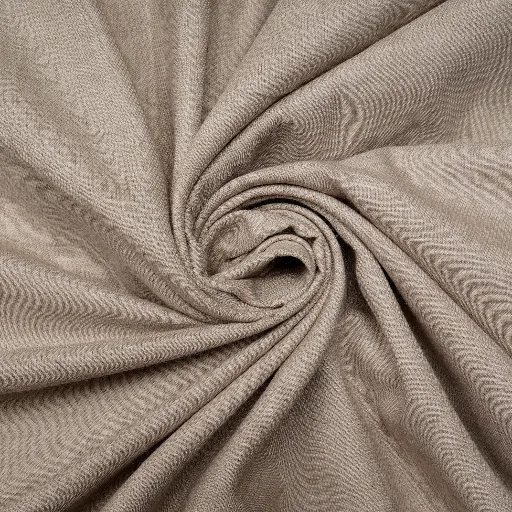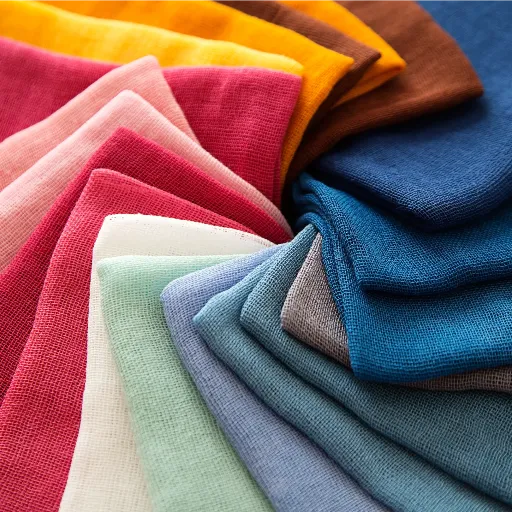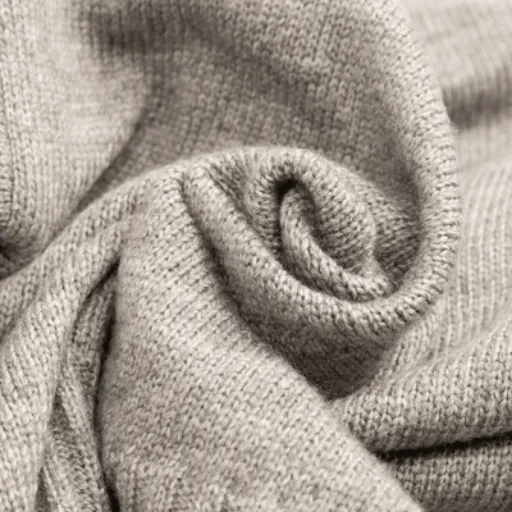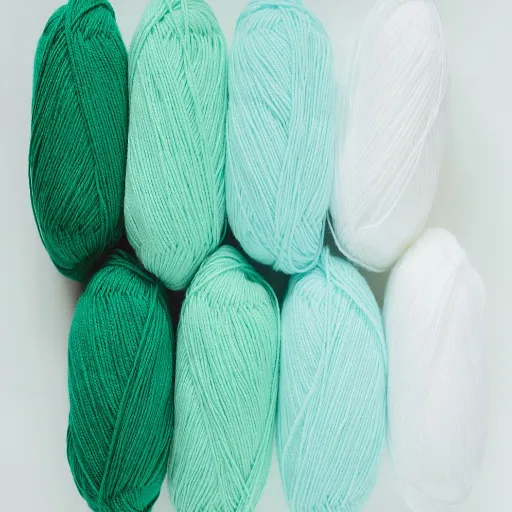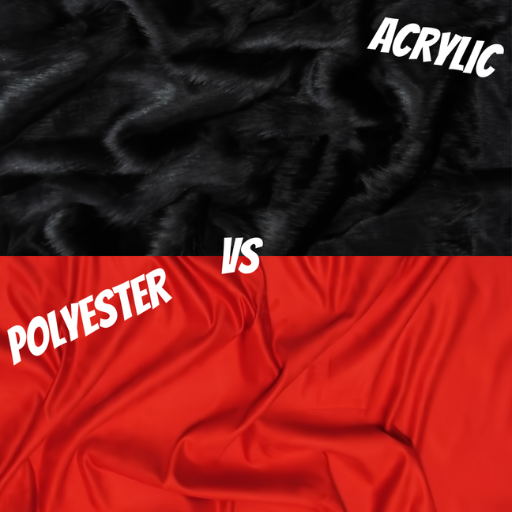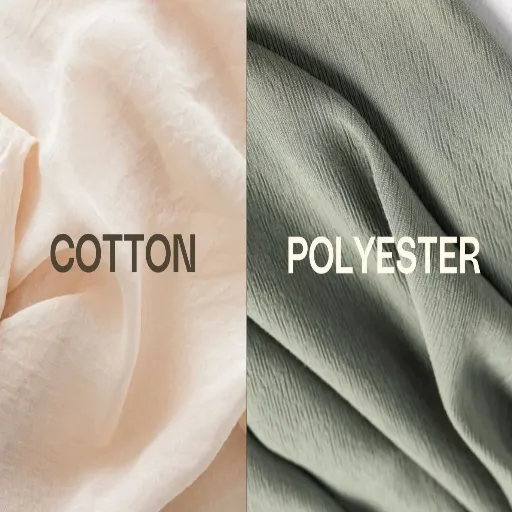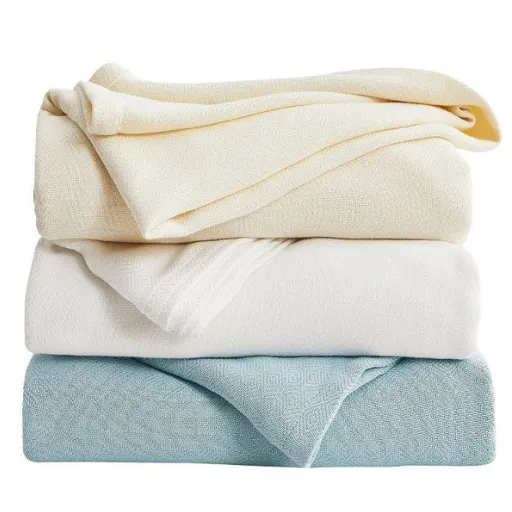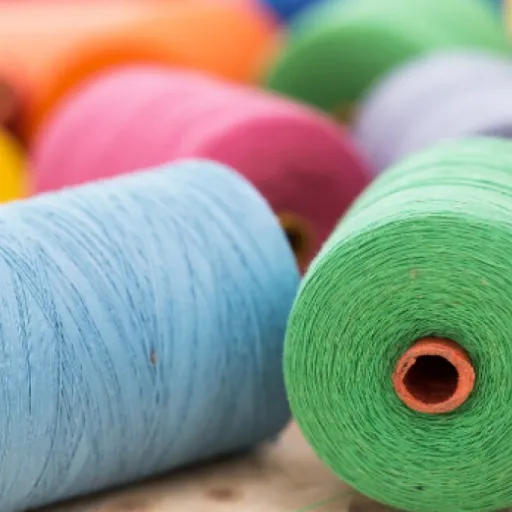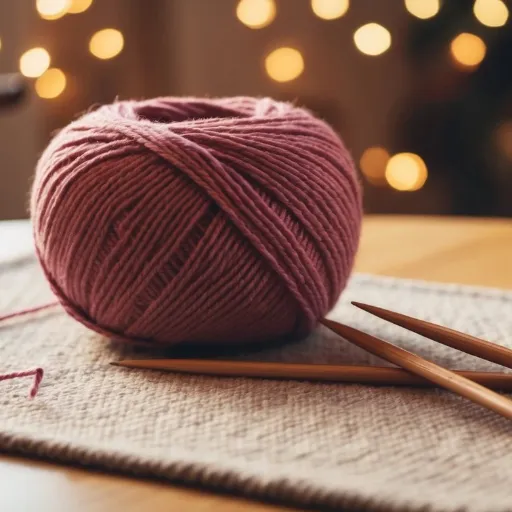The perfect yarn for your next project will, in most cases, be determined by the differences. Acrylic and cotton yarns are probably the two most commonly used types, and they differ significantly in composition and purpose. But is acrylic yarn equal to cotton? This might sound like an easy question, but in truth, it opens up to a multifaceted comparison that encompasses both durability and comfort. In this article, we will examine the significant differences, benefits, and disadvantages of each yarn. Whether you are an experienced crafter or a beginner, this little guide should clear things up and help you make wise choices on your creative journey.
Understanding Yarn Types: Acrylic and Cotton
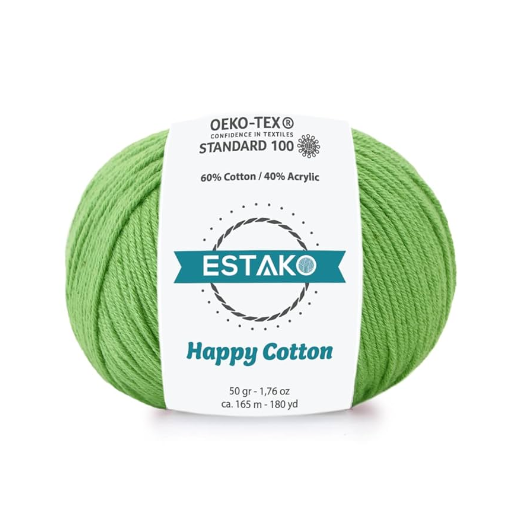
Not, acrylic yarn is not the same as cotton. Acrylic yarn is a synthetic material made out of polymer fibers, while cotton is a natural fiber harvested from the cotton plant. They might differ largely in their composition, feel, and ingoing qualities:
- Durability: Acrylic Yarn is made of mostly acrylic material, which is more durable and less prone to tearing compared to cotton; this makes it suitable for projects that require frequent washing and prolonged use.
- Texture: Soft, airy, and earthly, cotton yarn would be the best fit for seasonal clothing as well as kitchen or table cleaning clothes. On the other hand, acrylic yarn has gradation issues in terms of its density/texture depending on its quality.
- Care and Maintenance: Acrylic yarn is easier to maintain, as it can be washed in a machine and rarely shrinks. In contrast, cotton yarn is also fortunate to be washed, but it tends to shrink or lose shape over time if not handled properly.
- Cost: Acrylic yarn is typically less expensive than cotton yarn, which is ordinarily likely to be more costly due to its 100% natural state and manufacturing processes.
Two different kinds of yarn have distinct aesthetic features, so the choice between them depends on their applicability to the specific needs of various projects, such as tolerance to abrasion, appearance, or cost.
What is Acrylic Yarn?
Acrylic yarn falls into the category of “manmade” fibers and is a polymer fiber, acrylonitrile, which in turn is derived from a petrochemical. Wet and dry spinning are the methods that are used in the manufacturing of this type of fiber. Wet spinning and dry spinning are based on the principles of extruding the polymer into fibers then spinning them into yarn. Because acrylic yarn is relatively inexpensive to produce and can be used in various applications, it has become increasingly favored for knitting and crocheting. Acrylic yarns are thin and very tough so that they do not easily wear and spoil over extended use. Also, they are not known to irritate the skin and can be easily maintained clean due to being wash-proof and light in weight. It should be noted, however, that although acrylic is a great material for garments, it has limitations in terms of comfort, as it is not as breathable as natural fibers like cotton or wool, and its entire surface tends to cause the fabric to pill, especially when used excessively. Of course, in spite of these constraints, acrylic still manages to find extensive applications, including for those who look out for economic options.
What is Cotton Yarn?
This yarn is manufactured from the cotton plant and spun into threads through a process. Among other merits of cotton yarns is how they are very soft, which feels great on our skin. This explains why such clothing materials will always be the most loved. Cotton yarn is intended to support different rounds: from thin to thick, according to various craft needs. Through different washing procedures, cotton yarn straightens its period whereas irritating people with sensitive skin. Unfortunately, cotton yarn seams shrink unless pre-washed and will lose its elasticity over time, thus limiting its use in stretch-oriented projects. The increase in manufacturing also allows blended cotton yarns to mix natural cotton with synthetic fibers, enhancing their durability and reducing shrinkage, thereby giving them an extra edge.
Acrylic vs Cotton: Key Differences
|
Parameter |
Acrylic Yarn |
Cotton Yarn |
|---|---|---|
|
Material Source |
Synthetic, petroleum-based fiber |
Natural, harvested from plants |
|
Durability |
Highly durable and resistant to wear |
Moderate durability, prone to wear |
|
Texture |
Smooth, sometimes plasticky feel |
Soft and breathable texture |
|
Elasticity |
Good elasticity and stretch |
Limited elasticity |
|
Moisture Absorption |
Low moisture absorption |
High moisture absorption |
|
Washing Requirements |
Machine washable, low maintenance |
May shrink, requires careful care |
|
Weight |
Lightweight |
Generally heavier |
|
Heat Resistance |
Low, can melt under high heat |
High, handles heat effectively |
|
Cost |
More affordable |
Often more expensive |
|
Environmental Impact |
Non-biodegradable, synthetic impact |
Eco-friendly, biodegradable |
|
Best Use |
Versatile for crafts and garments |
Ideal for summer wear, blankets |
Properties of Acrylic and Cotton Yarn
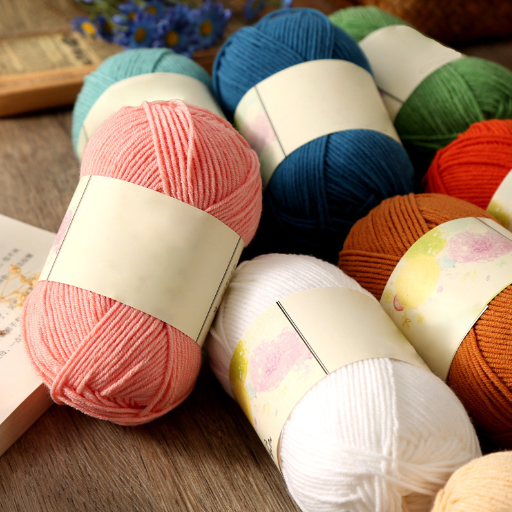
1. Durability
- Acrylic Yarn: Capable of strengthening and being utilized for a long period of time without any damage. Such types of yarn do not have their original softness when used over and over with washing.
- Cotton Yarn: This type of yarn is more durable. While it is indeed strong, this yarn may be damaged when it is wet, as it can be stretched or contracted quite easily.
2. Moisture Absorption
- Acrylic Yarn: Minimal wetness and water absorption. That being said, this may make the acrylic slightly warm and uncomfortable when the weather is humid.
- Cotton Yarn: Much water is absorbed making it breathable and cooling. It is perfect for hot and humid areas but stays damp longer.
3. Texture and Feel
- Acrylic Yarn: Can be smooth and a little plastic at times. It can look like any rough fiber made of the best duplicate.
- Cotton Yarn: Touch of the Natural, silky and not too glossy. Makeup that can be worn to the skin as it creates a feeling that is pleasant and adhering and gripping.
4. Color Retention
- Acrylic Yarn: No fading on wash. Due to the use of manufactured processes and dyes, acrylic yarn maintains its colors after washing and exposure to light.
- Cotton Yarn: Dyes can be very vibrant, yet they may fall out when exposed to the sun intensively and washed repeatedly because it is formed of natural fiber materials.
5. Elasticity
- Acrylic Yarn: Has moderate elasticity, in that it has the ability to stretch slightly before reverting back to its original position. On the contrary, the braid is rendered shabby and unfit for use in case it is stretched too much.
- Cotton Yarn: Limited elasticity, as without the presence of synthetic fibres, the material will lend itself towards minimal extension without rebounding.
6. Allergenic Potential
- Acrylic Yarn: Skin irritation can be experienced due to the synthetic characteristics. It is not an allergen.
Texture and Comfort
- Acrylic Yarn: There is a widespread idea that the acrylic yarn is plain in texture and therefore interests many people due to the uniformity in terms of hand and the look. Unlike the natural fibers which are more breathable, the synthetic fibers, however, have become soft because of the improvement in existing technologies. This is beneficial for both the number of projects and the garments, which are typically worn on a daily basis. It is very light which makes it very cosmetic and therefore it becomes comfortable to use as a garment or accessory. However, in some cases, situations may arise after prolonged use of an elastic garment.
- Cotton Yarn: It has not been mixed with other textile materials; hence, the cloth is pleasant and very soft and is easily affected by warmth, making it suitable for hot climates. This is given the fact that the fabric is cool and refreshing on the skin, and was well appreciated on the body of clothing. Even though the cotton has such an effect, there is a feeling that it might be a bit too snug as compared to the jersey, since all cotton will, especially when damp, result in this snugness and ‘weight’ which cannot be favorable for say, skirts, or even bed covers.
Durability and Longevity
Evaluating yarn components such as durability and longevity, acrylic and cotton yarns show quite different effects. Acrylic yarn is made from a firmer material as it is produced synthetically and is not easily worn, torn, fuzzed, or affected by factors such as the sun and water. Recovering such as acrylic projects and plastic with standing the hot sun and moisture usages and in cooling. They survive some time, even with moderate use in the heat of a drying machine in washing thanks to some factors. However, the acrylic may get spoilt by extreme heat for instance heat used by a gadget in drying was acrylic such as machine drying or mishandling.
Another point to address is the durability of cotton and other organic fibres, as their strength in dry conditions is impressive. It retains its quality even after being washed multiple times which is the reason for the making of things like dish cloths during the wet seasons or summer when people squirm in loose fitting clothes. Nonetheless, the durability of Cotton fibers may be lost momentarily when put in wet conditions as they may become weak thereby causing unnecessary elongation or even distortion under increased weights. If cotton makes moth regarding suchlike garments, it means that it is very imperative, thus inevitable, to use proper methods of care and drying cotton and the products made of this substance can last for a long time.
Cost Comparison
When calculating the benefits of using cotton wool instead of other non-cellulosic fibres such as polyester or rayon, the total price has many different influencing factors, raw material cost, processing complexity, and resistance of fiber to use for a longer period of time. Cotton is by far more expensive because it is a natural product, with a costly and labor-intensive seeding, harvesting, and processing techniques as well as water consumption, and weather dependence. For example, an eco-friendly brand made of perfect quality of cotton costs more because of farming measures and securing requirements.
Synthetic materials such as polyester, on the other hand, are known to be less expensive, owing to production processes that can be carried out on a larger scale and less susceptibility to variations in agricultural produce. However, while the initial outlay for the use of these materials in making cheaper items might be modest, utmost it is not cotton that does not decompose will be more beneficial as well as surface its cost in due course of time especially to those consumers seeking both the longevity of their items and the aspect of being green. The true cost has to be determined not only in terms of selling or purchasing a particular product but also the extent to which the object or the use of such material contributes for the very purposes intended.
Common Uses for Acrylic and Cotton Yarn
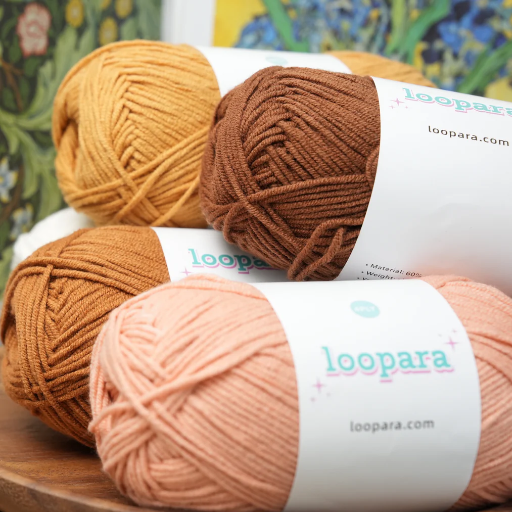
Acrylic yarns are often used in designing work that involves ease of workarounds and/or care of the products, wear resistance among others to all items, many of which require lesser quality of workmanship such as Afghans, shawls, toys, knitting or crocheting for beginners etc. Bright colors, tough fabric, and protection against traps are some of the features its components possess.
However, the usage of cotton yarn mostly dominates projects that have to be woollen with air and absorb liquids. For instance, some of such designs include the use of kitchen rubs, summer wear for children and infants, and other light clothes. This factor explains why cotton is a preferred material for substances that make contact with the skin or that are cleaned more regularly.
Clothing: When to Use Each Yarn
As for clothing, choosing the most appropriate material between synthetic and cotton fibers is important because of their structure and applications. So, composites or composite materials are more effectively used because these items such as polyester and acrylic fibers are stronger, more elastic and possess resistance to common causes of deterioration. Such fibers are the best for outerwear, sports outfit or any apparel that requires out story type of structure and durability but with them, wearing comfort is not left out. Furthermore, blend fabrics are stretchable and are frequently used in sportswear and clothing with shapewear functions.
Cotton yarn, however, shall mostly have an upper hand in designing clothing that seeks comfort, breathability, and overall attractiveness for the skin. It has properties that make it ideal for some summer clothing, for example, as it is moisture-wicking undergarments and baby clothes. Although prone to damage, especially when pulled too far due to the natural look of cotton’s fibers, natural aspects of comfort will be there, and the consumer using the product will enjoy and feel the natural sense of it all. To achieve better results, the use of climate, the purpose of use, and care must be part of the requirements in choosing the right type of skein for the project.
Accessories and Crochet Projects
Any crochet project provides a considerable range of possibilities for creating custom accessories without neglecting functionality and aesthetics. These also include rather impressive handmade accessories like shopping bags, shawls, caps or jewelry which too can be very well done with the help of different types of yarn and crochet work. For example, the linear regression method is more interchangeable when sewing light lace tops or elegant warm wool caps, among others. This is because cotton being more able to be stretched proves perfect for making other lightweight articles like summer hats or market bags. Alternatively, during the cold weather season that requires adding insulation, then huge many wraps and scarves will be made using that giant woolen thread.
Every crochet work necessitates the consideration of such variables as stitch styles, the knitwear quantity, and the flexibility of yarns before any work commences. For instance, much instagram tension with knitting wool may create pretty utilitarian warm articles such as boxes while loose pull of silk thread allows for gentle wrap around the body designs often associated with amazing wraps or shawls. Tunisian crochet, broomstick lace and perhaps Irish lace crochet techniques allow designer to create striking textures and their most extensive field of activity in this case is for example cro pipe – creative works.
Environmental Impact of Acrylic and Cotton
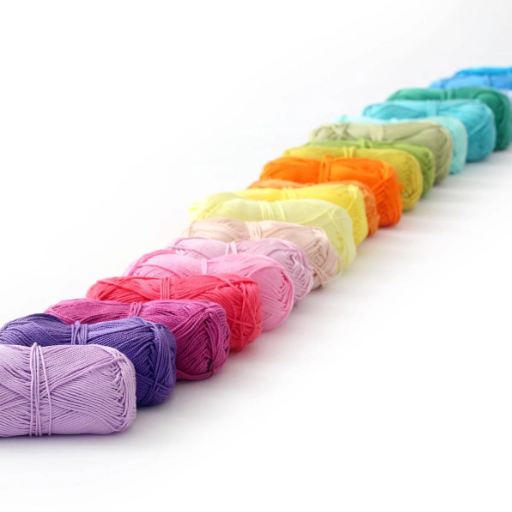
Due to the unique method utilized in their production, both cotton and acrylic have diverse impacts in the environment. It is correct to say that acrylic is harmful to the environment because it is essentially a petroleum product that has massive contributions to the consumption of ad-hoc energy sources. Acrylic also contributes significantly to environment pollution through the release of very harmful microplastics. They are not biodegradable and hence could have a long pollution effect on the environment. In contrast, cotton, though a natural fiber, is very water intensive and is conducive for the application of chemical fertilisers and pesticides, which could be detrimental to the environment. One promising alternative to organic farming is the use of organic cotton particularly as it cuts down on the use of more chemicals as well as conserves soil moisture although it could still be very water-consuming
Production Processes of Acrylic Yarn
Acrylic yarn is produced through many scientific as well as mechanical steps. Firstly, acrylonitrile, a major monomer, is polymerized through free radical vinyl addition to form polyacrylonitrile. This is the main polymer that accounts for more than 85% of the weight of acrylic fiber. Other monomers like vinyl acetate or methyl acrylate may be copolymerized to change the polymer properties, like better dye uptake or softness.
After the creation of the polymer, the material is dissolved in a chemical called a solvent, notably, dimethylformamide (DMF), or in other occasions, dimethylacetamide (DMAc), to create what is called a spinning solution. This solution is then pumped through spinnerets to form a coagulation bath a process known as wet spinning. Alternatively, there may be an employment of a process called dry spinning where the solvent is removed during spinning. These methods produce fine filaments called fabric rather than thread.
The subsequent step after that involves the fibers being stretched in order to better orient the polymer chains so as to improve the yarn’s tensile and the heat resistance. The fibers are then placed on another stretching machine, whereupon they are subjected to twisting and heating subsequent to completion of the process. These twisted and heated lines are then cut into lengths that are suitable for the final product or left uncoped as unbroken threads. Additional procedures, such as preshrinking through heat, may be carried out in order to enhance the effectiveness, dimensional stability, as well as overall functionality, of any cotton yarn.
Cotton Yarn Production and Sustainability
Cotton yarn production runs through a wide range of sophisticated steps which begin with the cotton bolls and proceed to harvesting up to ginning of the fibers where the fibers are removed from the seeds. The fibers are shaped, carded, and combed to take all the unwanted substances and in the staples in a straight line as they will facilitate making yarn of the same quality. Through spinning, the prepared fibers are turned into yarn which may require other processes like twisting or mixing in order to make them stronger, more elastic and more suitable for particular fabrics.
The water consumption and environmental capacity related to the cotton sector come with proper and global recognition as it addresses water management issues, reduction of cecide steroids, the organic farming of cotton. However, as regards the cotton industry, sustainable practices such as water efficient practices, the use of hybrid crops, no tillage systems or deployment of organic farming practices help to minimise harmful effects on land and on water. It includes environmentally benign yarn spinning technologies which help in conserving energy and materials and hence in reducing the impacts of production. For example, from the latest industrial trends, there are such initiatives as Better Cotton and Cotton 2040 which focus on the social responsibility, environmental impacts and tracing the supply of cotton. Even consumption of cotton yarn has uplifted, and it will continue to do so in the future, as the market will eventually demand more ethical and sustainable production of cotton yarn.
Choosing the Proper Yarn for Your Projects
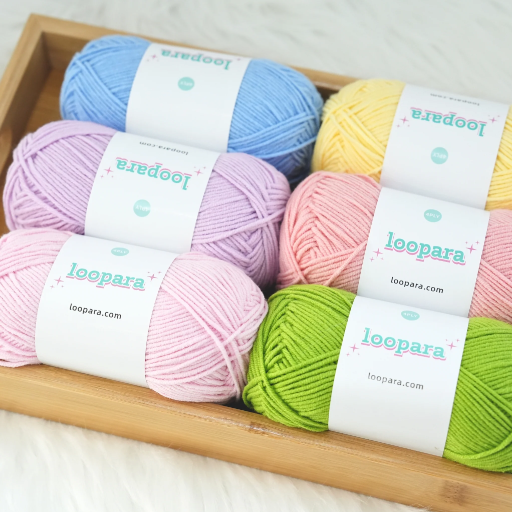
When looking to choose the right yarn for your project, the following are subsequent key factors that should be taken into consideration:
- Fiber Type: Basing on the project, the fiber that is to be used should be in line with what the project’s function will be. For instance, cotton is breathable and can be used for summer outfits, while wool is warm therefore cold weather clothing or even blankets can be made out of it.
- Weight and Thickness: A light or low weight yarn is best corresponded to a soft handle piece while a thick bulky yarn suits a resistant high structured piece better.
- Durability and Care Requirements: Determine if it can be machine washed. The requirements of spatial care include photosensitivity, especially if the project is to be used often, or if the wear and tear should be high.
- Color and Texture: Yarn should blend harmoniously with the design in the picture, in terms of both size and color but in this case attention should be paid to the scheme’s graphical structure.
The proper assessment of these issues will help you to opt for the most appropriate decision accordingly to both the design and practical requirements of the project. Still remind if you can that the recommendation for using the pattern is the most appropriate.
Project Type: When to Choose Acrylic or Cotton
When experimenting with the idea of acrylic and cotton yarn, the real purpose of the project should always be a preliminary factor of the choice. The word ‘winter’ in the context of acrylic can confirm it because items such as frocks or scarves, and especially crochets, are made well these days. They offer greater flexibility and very dramatic color ranges. The other benefit of acrylic is that it is long-lasting and can amble in the washing machine which makes it useful for everyday usage as the item can be regularly washed.
For summer wear, such as beach pants for kids or even baby samplers, it is better to use cotton yarn, which is breathable and capable of absorbing moisture that the body perspires. The fibers are a result of biomaterial and hence are biodegradable, enabling the fibers to be watered down, but they are not color-bearing since it is more regular, which does not help improve the fit. But one of the demerits is that, since they do not contain any spandex, 100 percent cotton knitted fabric may not be suitable for projects that involve a lot of stretch.
Ultimately, choosing between acrylic and cotton depends on the functional demands and aesthetic preferences of your project. Factors such as climate, end-use, maintenance needs, and cost should also guide the decision-making process for optimal results.
Care Requirements for Each Yarn
The treatment of the yarn must be closely observed in order to protect the quality as well as the retention and use of the finished items. Acrylic yarn, which is man-made, carries its own strength and can usually endure the rigor of washing in a fabric washer and the convenience of drying it under sunlight or an electric fan. One must be very careful to avoid using a hot dryer after washing a properly crocheted or knitted item as their are chances the yarn would loose its shape and even melt. It is also worth to mention the fact that thanks to the yarn, synthetic fibers and most importantly acrylic is avoided for it is not appetizing for moths even men of good will. And it is even worse when a person tries to dye the acrylic, or rather uses this low temperature dying on animals as they are all actually the same, except for the external bulges.
Now that we are done here, for a proper understanding of how to look after cotton yarn and acrylic yarn. Acrylic is simple to care for, and care needs only be taken for the items dyed with Kool-Aid or clothing very thickly edged, as Kool-Aid dye will greatly fade due to high temperatures. Treatments will vary according to the yarn, for example, lukewarm water is recommended for cleaning the clothing meant to be air dried, while warm water is okay for the remaining cloth pieces for air drying. Storage is slightly less convenient for this fiber, once the fabrics are completely dry, as moist cotton can be damaged by folding. However, irrespective of the season, the causes give rise to the inference that cotton clothes are preferable. In addition to that, however, the basic advantage of using acrylic is on the basis of the general endorsement, that they are of lower maintenance and hence less expensive compared to cotton under wet conditions.
Reference Sources
1. Warping Parameters Influence on Warp Yarns Properties:
- Key Findings:
- The study analyzed the tensile strength and elongation of yarns (cotton, spun polyester, and polyacrylic) under different warping conditions.
- Polyacrylic yarns exhibited the highest elongation due to their inherent elasticity and air content.
- The tensile strength of all yarn types was highest when the cone was positioned closest to the warping drum.
- Polyester yarns showed superior tensile strength compared to cotton and polyacrylic.
2. Recycling of Textiles in India:
- Key Findings:
- Cotton and acrylic yarns are extensively recycled in India for various applications, including industrial and household products.
- Recycled acrylic yarn is used in embroidery and handmade rugs, while cotton yarn is repurposed for doormats, rugs, and industrial wipers.
- The Panipat region is a major hub for recycling wool and acrylic yarns, producing “shoddy” wool yarns and blankets.
3. Optimization of Opening Roller Speed on Properties of Open-End Yarn:
- Key Findings:
- Increasing the opening roller speed (from 7000 to 8000 rpm) improved yarn quality parameters such as RKM (breaking strength), unevenness, and imperfections.
- Higher speeds also led to increased end breakages due to trash particle accumulation in the rotor groove.
Frequently Asked Questions (FAQs)
Q: Acrylic vs Cotton Yarn: What’s the Difference?
A: Acrylic yarn is a man-made synthetic yarn that is known for its lightweight properties and affordability, making it a popular choice for many crafters. On the other hand, cotton yarn is made from natural fibers of the cotton plant, which gives it a breathable quality. This natural fiber allows cotton yarn to be softer and more absorbent, making it ideal for summer garments and items like dishcloths. Depending on the project, you may prefer one over the other; for instance, acrylic yarn is often chosen for durable, vibrant projects, while cotton yarn is favored for its natural feel and comfort.
Q: Choosing Between Acrylic and Cotton for Your Crochet Projects
A: When choosing the right yarn for your crochet project, it’s essential to consider the properties of both acrylic and cotton yarn. Acrylic yarn is lightweight and comes in a wide range of colors, making it great for vibrant decorative items. In contrast, cotton yarn is heavier and can withstand washing better, which is ideal for items that need frequent cleaning. The decision often boils down to the desired texture and end use; for warm weather garments, cotton may be preferable, while for cozy winter items, acrylic could be the better choice.
Q: Comparing Acrylic and Cotton Yarn Properties
A: When comparing acrylic and cotton yarn, it’s important to note that acrylic is generally more durable and less prone to fading than cotton. However, cotton yarn is often softer against the skin and is made from natural fibers, making it a favorite for sensitive skin. The breathability of cotton makes it suitable for summer garments, while the warmth of acrylic yarn is ideal for winter projects. Each type has its unique advantages, so understanding yarn properties can help you select the appropriate yarn for your needs.
Q: Is Acrylic Yarn Cotton Blend Possible?
A: Yes, there are yarns available that are a cotton blend, combining the best properties of both acrylic and cotton. These yarns offer the softness and breathability of cotton while also providing the durability and vibrant color options that acrylic yarn is known for. This blend can be perfect for various projects, giving you a versatile option that is both lightweight and comfortable. When selecting a cotton blend yarn, consider how it will perform depending on the project you have in mind.
Q: What Projects are Best with Acrylic or Cotton Yarn?
A: Acrylic yarn is great for items like blankets, toys, and accessories due to its resilience and range of textures. Cotton yarn, being made from natural fibers, is ideal for dishcloths, summer garments, and other wearable items that require breathability. If you’re working on a crochet project that needs to be lightweight and easy to wash, cotton is often preferred. For projects requiring more durability or vibrant colors, acrylic yarn is likely the better choice. Ultimately, the project type will guide your selection.








